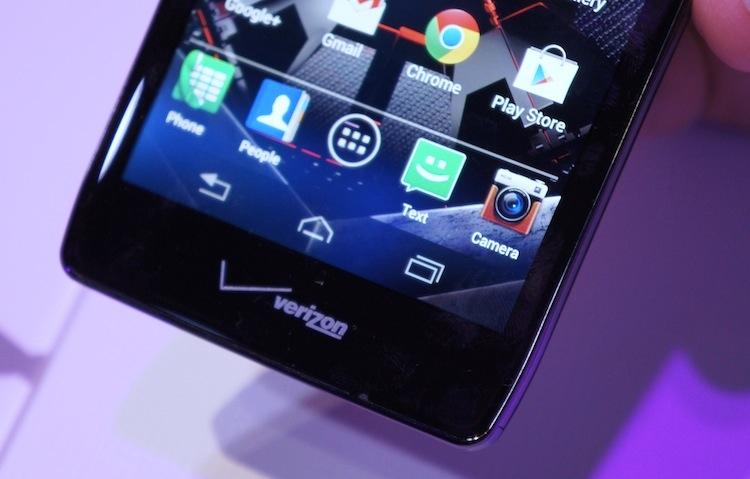
September has arrived, and subsequently become the life of the party so far this year in the mobile tech industry. Just barely into the month and we already have a ton of announcements regarding much anticipated devices that phone lovers everywhere can drool over (although, I wouldn’t recommend actually drooling on your device as it would cause liquid damage).
Motorola seems to be leading the release game by announcing RAZR after RAZR after RAZR, literally. You’ve got to two higher end Android devices, the Droid RAZR HD and the Droid RAZR Maxx HD. Both devices have 4.7 in 720p super AMOLED HD displays, 1.5 GHz dual-core processors, and 8 MP cameras. The two devices are similar, but there are a couple of key differences. The Droid RAZR Maxx HD is going to have better battery life, running on a 3,300 mAh battery as opposed to the RAZR HD’s 2,530 mAh battery. This is impressive as the 3,300 mAh battery claims to last for up to 21 hours of talk time. I’m not sure who I’d talk to for 21 hours, but it would probably be somebody else with a Droid RAZR Maxx because there’s not a lot of phones out there that last that long! While the Droid RAZR HD has 16 GB of internal storage with micro SD support (up to 32 GB), the Maxx will double the internal storage at 32 GB, also including micro SD (32 GB) support. Both devices will come preloaded with Android 4.0, but is said to be upgraded to Jellybean later in the year.
Along with the two bigger RAZRs, you have the Motorola RAZR M, which is more of a mid-range Android device. The RAZR M will support a 4.3 in display, with an 8 MP rear camera and a VGA front-facing camera. The device will run on a 2,000 mAh battery, which doesn’t seem like a whole lot for the features that this phone supports. This phone will also come out of the box running on Ice Cream Sandwich, and upgraded to Jellybean later this year. All three of the RAZR devices will ship with 4G LTE capabilities.
I wouldn’t be doing my job if I didn’t include the fact that Apple has finally sent out their invitations for their event hosted on September 12. I won’t jump the gun too much regarding the latest and greatest Apple smartphone, although I’ve seen various leaked parts and rumors. If it turns out that the iPhone “5” has a 4” display that extends height wise rather than width, I’m interested to see how the public reacts to that. I myself am used to wider phones, and wonder if I would be able to comfortably adapt to a taller display, and if it makes any difference. The new device will definitely run iOS 6, which includes features like Passbook, Facebook integration, a new in-house Maps app, and FaceTime over 3G.
The last anticipated devices I’ll mention are the Nokia Lumia 920 and the Lumia 820, the flagship devices for Windows Phone 8. These phones impress me the most, which is surprising as I’ve never been much of an avid Windows Phone user after having three bad Windows Mobile experiences. Three strikes and you’re out, under normal circumstances, but with what I’ve seen from the Lumias I might have to make an exception to my own rule. The new Nokia Lumia 920 sports a 4.5 in display, running on a 1.5 GHz Snapdragon S4 CPU processor, and includes 32 GB of internal memory. It has an 8.7 MP camera on the back, and a 1.3 MP front facing camera. All that is pretty standard that you see with every phone. What makes the Lumias stand out to me is a few of the features that look to be phone specific. For one, it has PureView technology, which is used in Nokia’s PureView cameras. Now really, it’s not any different than any other comparible 8 MP camera except for it has one important feature – optical image stabilization. As someone with a toddler constantly on the move, this is important to me in a camera, phone or not. I enjoy not having to lug around both my phone and a camera at the same time, and the reported image stabilization made my eyebrows raise in amusement. Aside from the camera, Nokia’s PureMotion HD+ display is another great selling point. This display is reported to use “super sensitive technology”, which means you can even use it with gloves or mittens. The Lumia devices also offers wireless charging capabilities, which could definitely come in handy. The Nokia Lumia 820 is a slightly lower-end device when compared to the 920, only providing 8 GB of internal memory. A cool feature of the 820 that the 920 doesn’t have, however, is removable backplates. Nokia offers several different colors for the backplate, including purple, yellow, gray, black, and white.
After seeing what the Lumias have to offer, I’m actually pleasantly surprised. The more I read about it, the more I wanted one. Despite the phone’s large size, this just might be the device to stray me away from my beloved iPhone 4S. I feel that the Droid RAZR line doesn’t have anything very revolutionary to offer apart from other high end Androids, namely the Galaxy SIII. A side-by-side comparison will definitely be anticipated for those devices. As for the iPhone “5”, I would love to be super glued to the Apple bandwagon and securely say that I’d never give my iPhone up for anything, but those Lumias are just drawing me right in with some of those features.
How do you feel about the plethora of announcements bombarding the mobile phone world? Do you think the new Nokia Lumias will be a turning point for how people view Windows Mobile devices? Or will you forever be an Android or iPhone fan? Let me know your thoughts in the comments below!